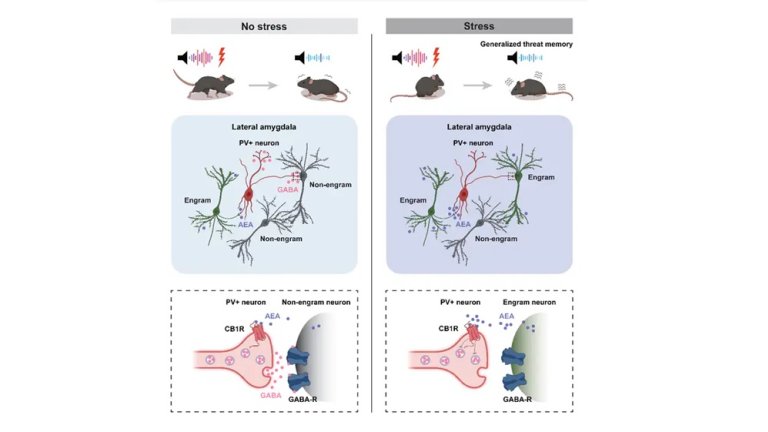Memories help us make decisions by using past experiences to navigate new situations. However, when negative memories are too broadly applied—such as seeing safe situations as dangerous—it can lead to disorders like PTSD. Stress plays a role in this overgeneralization, but the details of how it works weren’t clear. The research found that stress affects specific brain cells (PV+ interneurons) in the amygdala, disrupting their ability to control which neurons store a memory. This leads to a larger, less precise memory network, making fear memories more generalized. Stress also triggers the release of endocannabinoids, which reduce the activity of PV+ cells to cause this effect. By blocking this process with genetic tools or FDA-approved drugs, the researchers were able to restore memory accuracy in stressed mice. These findings point to new ways of treating stress-related disorders like PTSD.

This research underscores the potential of targeting stress-related brain pathways to develop new treatments for PTSD and similar disorders. By unravelling the connection between stress, brain cell function, and memory, the study opens new doors for therapeutic innovation in mental health.
Read the publication in Cell: Stress disrupts engram ensembles in lateral amygdala to generalize threat memory in mice
Source: University of Amsterdam

